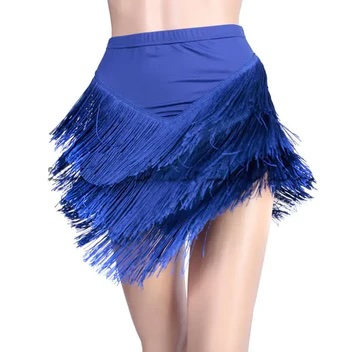Unleash Your Dance Spirit!
Discover premium dance gear, exclusive merchandise, and everything you need to dance your absolute best. Join thousands of passionate dancers worldwide!





Yakshagana dance in Karnataka India: Origin, History, Costumes, Style, Technique, and Music
Are you curious about traditional dance forms that tell a story? Yakshagana, a dance opera from Karnataka, India, is one such captivating art. It mixes drama, music, vibrant costumes, and energetic moves to narrate tales from ancient scriptures.
Originating in the coastal districts of Karnataka, this folk theater has deep roots in Indian culture.
Yakshagana showcases the rich heritage of Karnataka through its colorful costumes and dynamic performances. This article will take you through its origin, history, dazzling outfits, unique style and technique, plus the enchanting music that accompanies each performance.
Get ready for an exciting journey into this traditional theatre form! Keep reading to discover more.
Origin and History of Yakshagana
Yakshagana originated in the coastal districts of Karnataka. Sri Madhwacharya laid its foundation, and Sri Narahari Thirtha popularized it across the region.
Believed to have originated in Karnataka's coastal districts
Yakshagana dance has its roots in the coastal districts of Karnataka. This vibrant art form flourished in temples and rural areas, showcasing local stories and folklore. Sri Madhwacharya played a key role in developing Yakshagana.
He inspired many performers through his teachings.
The performance style evolved over centuries. Artists expressed themes from Hindu epics using dramatic dialogue and music. Colorful costumes and intricate makeup added charm to each show.
Today, Yakshagana remains a vital part of Karnataka culture, captivating audiences with its energy and skill.
Yakshagana is not just dance; it is the heartbeat of our heritage.
Developed by Sri Madhwacharya
Sri Madhwacharya played a vital role in developing Yakshagana dance. He was a prominent philosopher and theologian in the 13th century. His teachings emphasized devotion and morality.
This influence shaped the themes of many Yakshagana performances. Artists often portray stories from Hindu epics, focusing on moral lessons.
Madhwacharya's approach helped legitimize this folk dance form as a cultural art. The blend of spirituality and performance attracted many followers. As a result, Yakshagana began to flourish across Karnataka's coastal regions.
Over time, it evolved, absorbing various influences while retaining its unique style and technique reflective of Indian classical dance traditions.
Popularized by Sri Narahari Thirtha
Sri Narahari Thirtha played a crucial role in popularizing Yakshagana dance. He brought the art form to the attention of many people in Karnataka. His efforts helped transform it into a significant part of Indian folk traditions.
Under his influence, Yakshagana gained recognition across different regions. It became a vital expression of South Indian culture and tradition.
Thirtha also contributed to its evolution by incorporating new techniques and styles. His innovative approach ensured that Yakshagana remained vibrant and relevant over time. The blend of storytelling with energetic dance movements captivated audiences everywhere.
This led to further developments in technique, music, and performance style within the art form.
Evolution and variations
Yakshagana dance has evolved over centuries. It grew from simple folk performances into a complex art form. Historically, Sri Madhwacharya laid the groundwork for this dance in Karnataka's coastal regions.
Later, Sri Narahari Thirtha popularized it further.
Regional variations emerged as different areas embraced their unique styles and themes. Some performances highlight local legends while others focus on mythological tales. These changes contributed to Yakshagana's rich tapestry of storytelling within Indian performing arts.
The vibrant costumes and energetic movements also reflect these regional differences, enhancing its appeal among audiences across India.
Costumes and Style of Yakshagana
The costumes of Yakshagana are vibrant and intricate, capturing the audience's attention with their bold colors and detailed designs. Dancers wear traditional makeup that enhances their expressions and character portrayals.
The energetic dance movements showcase agility, featuring acrobatic elements that add excitement to each performance. Discover more about these captivating aspects of Yakshagana!
Colorful and elaborate costumes
Yakshagana dance features colorful and elaborate costumes that capture attention. Performers wear vibrant outfits made from silk and cotton, showcasing bright colors like red, green, and yellow.
These costumes often include intricate designs and patterns, adding to the visual appeal of each performance.
Makeup plays a vital role in Yakshagana's presentation. Artists apply bold face paint that reflects their character’s traits. Costumes and makeup combine with energetic dance movements to create an immersive experience for the audience.
This striking combination highlights the significance of Yakshagana in Indian dance forms and showcases Karnataka's rich cultural heritage.
Traditional makeup
Traditional makeup plays a vital role in Yakshagana dance. Performers use bright colors to highlight their facial features. This technique helps them convey emotions clearly while performing on stage.
The makeup includes intricate designs that symbolize different characters, such as gods and heroes. Artists apply bold outlines around the eyes with vibrant shades of red, green, and gold.
This eye-catching look adds drama to each performance.
Makeup creates an essential connection between the dancer and the audience. It enhances the visual appeal of this traditional folk theater in Karnataka, India. Each stroke tells part of the story being performed on stage.
Alongside costumes, it contributes significantly to Yakshagana's unique style and expression. Next, we will explore the energetic dance movements that define Yakshagana’s captivating performances.
Energetic dance movements
Yakshagana features energetic dance movements that captivate audiences. Dancers perform dynamic steps and leaps, showcasing their strength and agility. Each movement tells a story or portrays various characters from mythology.
The performers synchronize their actions with the rhythm of the music, creating a lively atmosphere.
Acrobatics often enhances these movements. Dancers incorporate flips and jumps to heighten excitement on stage. This vibrant style differentiates Yakshagana from other South Indian dance forms.
Powerful gestures convey emotions effectively as dancers communicate through expressive body language. Exploring the technique and music of Yakshagana reveals how it all comes together seamlessly.
Acrobatics
Acrobatics play a vital role in Yakshagana dance. Performers execute impressive leaps, twists, and turns with high energy. These movements enhance the storytelling aspect of this traditional folk theater.
Dancers often include stunts that captivate audiences and showcase their skill. This dynamic style reflects Karnataka's rich cultural heritage. The blend of acrobatics with dramatic expression engages viewers fully in the performance.
Audiences appreciate how these techniques elevate the overall artistry of Yakshagana dance in Karnataka, India.
Technique and Music of Yakshagana
Yakshagana blends Karnataka Sangeet and Hindustani music. Musicians use instruments like the maddale and chande to create lively rhythms that elevate the performance.
Combines Karnataka Sangeet and Hindustani music
Yakshagana dance in Karnataka blends Karnataka Sangeet and Hindustani music. This combination creates a unique sound that enhances the performance. Artists use traditional instruments like maddale and chande, which add rhythm and depth.
The melodies draw from ragas while the beats follow specific talas. This fusion of musical styles makes Yakshagana vibrant and engaging.
The music of the heavenly yakshas plays an important role in setting the tone for each scene. Performers rely on these musical elements to convey emotions and narrate stories effectively.
Through this intricate relationship between dance and music, Yakshagana showcases its rich heritage as an Indian folk theater tradition.
Use of instruments such as maddale and chande
Yakshagana features vibrant music that enhances its performances. Musicians use the maddale, a drum made from jackfruit wood, to provide rhythm. The chande, another essential instrument, is a larger barrel-shaped drum.
Together, they create an energetic sound that complements the dance movements.
The combination of Karnataka Sangeet and Hindustani music adds depth to Yakshagana's unique style. Ragas and talas play a crucial role in this form of art. Musicians skillfully blend these musical elements during performances.
This intricate fusion makes Yakshagana stand out as a significant part of Indian performing arts and traditions.
Importance of ragas and talas
Ragas and talas play a crucial role in Yakshagana dance. They provide the emotional foundation for performances. Ragas, with their melodies, set the mood and tone of each piece. Talas dictate the rhythm, guiding dancers in their movements.
This combination enhances the storytelling aspect of Yakshagana.
Musicians use traditional instruments like maddale and chande to create these sounds. Their lively beats energize performers on stage, making every performance unique. The blend of music traditions adds depth to this art form.
Next, we will explore how Yakshagana is significant in Karnataka's culture.
Significance of Yakshagana in Karnataka's Culture
Yakshagana serves as a vibrant expression of Karnataka's rich heritage. This traditional folk theater connects the community through stories and performances. It plays a vital role in preserving local customs and values.
Many other Indian dance forms draw inspiration from its unique style and techniques. Explore how Yakshagana continues to shape cultural narratives today.
Considered a traditional folk theater
Yakshagana is regarded as a traditional folk theater in Karnataka. This unique art form combines dance, music, and drama to narrate stories from Hindu epics. It features vibrant costumes and energetic performances that captivate audiences.
Each performance showcases the rich cultural heritage of Karnataka.
Performers express emotions through their movements and facial expressions. The use of live music enhances the dramatic effect on stage. Yakshagana influences other Indian dance forms by blending Karnataka Sangeet with Hindustani traditions.
Its dynamic style continues to thrive in modern performing arts, keeping its legacy alive in Indian culture.
Represents the rich cultural heritage of Karnataka
Yakshagana dance showcases the vibrant cultural heritage of Karnataka. This traditional folk theater has deep roots in the state, drawing on stories from Hindu epics. Enthusiastic performances reflect local customs and beliefs.
Colorful costumes and energetic movements capture the audience's attention.
The art form influences other Indian dance styles, enriching India's performing arts landscape. Music plays a vital role in Yakshagana, blending Karnataka Sangeet and Hindustani traditions.
Instruments like maddale and chande enhance every performance. Each show becomes a celebration of Karnataka's diverse culture and history, connecting generations through storytelling and artistry.
Influenced other Indian dance forms
Yakshagana dance significantly shaped other Indian dance forms. Its vibrant storytelling and expressive movements inspired various regional styles. The emphasis on elaborate costumes and makeup in Yakshagana influenced the visual aspects of many dances across India.
Dance artists often adopt its energetic techniques, making performances more dynamic.
The combination of music and narrative in Yakshagana also impacted how other disciplines present their stories. Many contemporary dancers incorporate elements from this traditional form.
By merging Karnataka's rich cultural heritage with diverse patterns, they create unique performances that resonate with audiences today.
Importance in Indian performing arts and traditions
Yakshagana dance holds great importance in Indian performing arts and traditions. This vibrant form of theater showcases the rich cultural heritage of Karnataka. It blends storytelling with music, dance, and drama.
Artists perform various roles, bringing mythological tales to life on stage. The unique blend of Karnataka Sangeet and Hindustani music enhances its appeal.
Yakshagana influences many other Indian dance forms. Its colorful costumes and energetic movements inspire performers across the country. Traditional techniques draw audiences closer to ancient narratives.
Such artistic expressions preserve customs that define regional identity in India today. This performance art continues to thrive as it engages new generations while honoring age-old traditions.
FAQs
1. What is the origin and history of Yakshagana dance in Karnataka, India?
Yakshagana dance is a traditional Indian performance that originated in the region of Karnataka, India. Its rich history spans centuries and it's deeply rooted in Indian music traditions.
2. Can you describe the unique style and technique of Yakshagana dance?
The style of Yakshagana involves intricate stage techniques including complex footwork and expressive gestures. The technique blends elements of drama, music, dialogue, costume, makeup, and dance.
3. What type of costumes are worn during a Yakshagana performance?
Performers wear vibrant costumes with elaborate headgear symbolizing various characters from mythology. These costumes add to the visual spectacle that characterizes this form of art.
4. How does music contribute to a Yakshagana performance?
Music plays an integral role in Yakshagana performances by setting the rhythm for dancers' movements while enhancing storytelling through melody.
Yakshagana dance in Karnataka India Quiz
Test your knowledge about yakshagana dance in karnataka india




 Sign in with Google
Sign in with Google